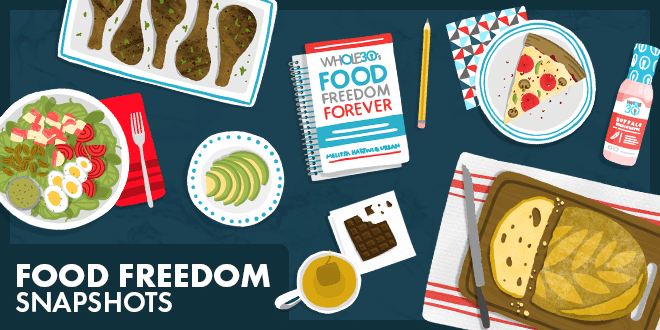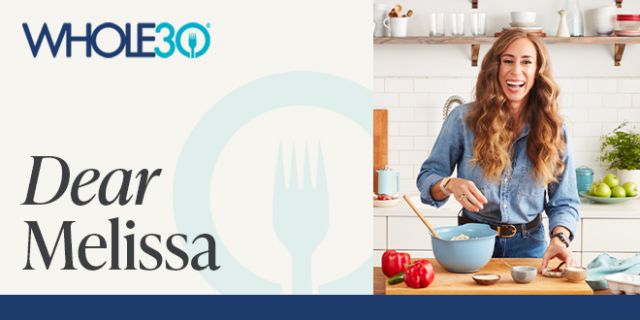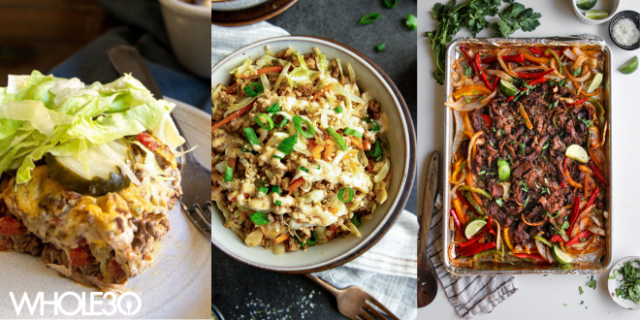
We’ve saved the best part of the Whole30 for last: Food Freedom.
The Whole30 consists of the 30 day elimination phase, the reintroduction phase, and Food Freedom.
Wondering what Food Freedom is? Food Freedom is feeling in control of the food that you eat, instead of food controlling you. Wondering what Food Freedom looks like? Experiences of Food Freedom are as diverse as our community. Every Food Freedom journey is different, with different joys and challenges, diverse diets, and a unique sense of empowerment for every individual.
With this series, we want to celebrate Food Freedom by sharing snapshots of what Food Freedom looks and feels like members of our Whole30 HQ team and Certified Whole30 Coach community. We’ll be sharing more snapshots throughout the year so you can see what this looks like for other people as you navigate your own Food Freedom journey. To see past snapshots click here.
Here’s a little background about our contributors:
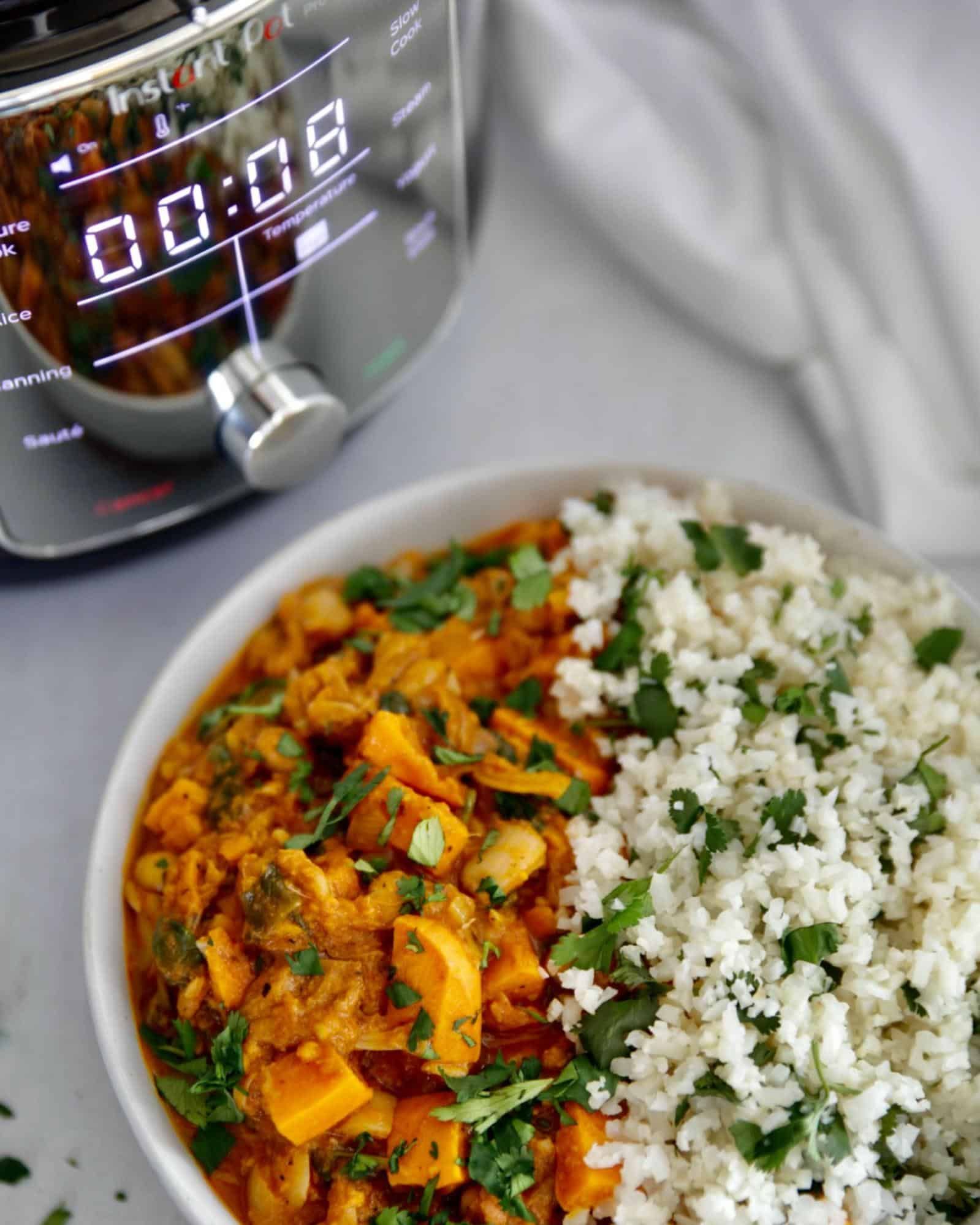
Jacob Heath Henriquez
Jacob Heath Henriquez was the 2019 Whole30 Coach of the Year and Director of Marketing for The New Primal. He lives in Atlanta, GA with his husband and enjoys helping clients find their path to Food Freedom by emphasizing the importance of helpful habits. He found Whole30 in 2013 as a means to treat his chronic asthma and has since found a place in his Food Freedom where he’s confident in his food choices, understands the ins and outs of his sugar dragon, and thrives in sharing what he’s learned with his groups and on social media.
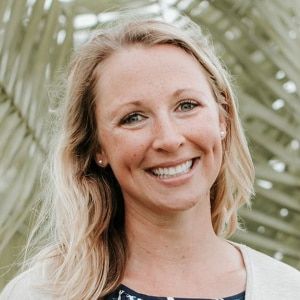
Stephanie Greunke
Stephanie Greunke is Whole30’s in-house Dietitian and Education Manager. She lives in Wisconsin with her husband and two sons. Stephanie specializes in prenatal/postnatal nutrition, behavioral psychology, and holds additional certifications in perinatal mental health and fitness.
Stephanie has been an advocate of the Whole30 program since 2010, using the program personally and professionally with her clients. She’s also the co-host of the “Doctor Mom” Podcast and an internationally recognized speaker. Stephanie is committed to building a community of parents who encourage each other and share their own experiences so they know they’re not alone and have resources to feel empowered.
When did your Food Freedom Journey start and what main pain points led you to work toward finding it?
Honestly? Two years after my first Whole30. I really thought I had it all figured out by doing a Whole30 a few times a year. I slowly realized I wasn’t learning anything. I was preaching that Whole30 wasn’t a diet while actually using it as a diet. I knew I had to break that cycle. Instead of doing the Whole30 over and over again, I decided to focus on reintroduction so that I could learn how to make informed decisions in my Food Freedom.
My Food Freedom journey started in 2015 when I started thinking about having kids, stopped the birth control pill and discovered underlying hormone issues. I thought the way I was eating was working for me and soon realized that I had been following other people’s rules (in this case, very low-carb Paleo) for too long. This didn’t work well with my body and level of physical activity. I started adding in more whole food-based carbs (sweet potatoes, winter squash, fruit, lentils, legumes) and used what I had learned in previous Whole30 resets to expand my diet. Allowing foods back into my diet that I knew worked well versus sticking to a plan long-term felt liberating. Shortly after I began my independent journey to finding Food Freedom, the book Food Freedom Forever was released, and I learned additional strategies and a framework that has been such a gift as I navigate new seasons of my life.
What’s been the hardest part of the process for you? Where are you still growing in your Food Freedom?
Unlearning so much diet-talk like falling off the bandwagon and labeling foods as good and bad (and even dropping terms like healthy) have been so freeing but also super hard because they’re ingrained in us. We often shame ourselves when it comes to the choices we make with food, so unlearning the words I used to shame myself was super hard. Taking that power away from myself has made every part of this astronomically easier. That said, I still have a ways to go and always will. My biggest trigger food is sugar and I’m still learning how to navigate that without demonizing it.
The hardest part of the process for me is being present and mindfully choosing what’s “worth it” when I’m navigating my kid’s tantrums, sleep deprivation, and stressful events. I sometimes forget to pause between feeling the discomfort and grabbing a sweet treat or snack, which doesn’t allow myself the opportunity to honor my true need in that moment. Instead of feeling guilty about emotionally eating, I remind myself that I’m a human doing my best to overcome instincts that have been with me since before I can remember. We’re wired to seek comfort in times of discomfort and through my food freedom journey, I now have other tools like journaling, yoga, and music that I’m learning to choose instead of sugar.
What’s been the greatest joy of the Food Freedom process?
For the first time in years, I don’t feel like I give food much thought past ‘I’m not really in the mood for X because it’ll give me brain fog and I’m enjoying how I feel today.’ I can walk past foods that used to be the things I regularly over-consumed OR I have the capacity now to CHOOSE to eat them, guilt-free, and move on with my day. I can’t stress enough what a gift that is.
Finding a deep sense of trust and comfort in my body and my choices. For so long I put my trust in other nutrition experts, books, or programs to tell me how I should eat. Whole30 gave me the opportunity to be my own detective to see what works for me and how it changes in different seasons of my life. This approach feels light, flexible, and playful. It allows me to have ice cream with my kids on a hot summer day without feeling guilty after or awkward during. I consider Food Freedom a gift I can hopefully model and pass down to my kids as well.
What does a typical day of eating look like for you?
I’m a late breakfast person. I enjoy working out on an empty stomach and regularly do, even though it doesn’t work that way for many people. I get up in the am, drink some water, workout, and will have a post-workout meal like sliced turkey/chicken or sometimes a pea protein drink. About 30 minutes later, I’ll have breakfast. This is usually just whatever leftovers I have in the fridge over some greens with coffee, sometimes caffeinated but usually decaf. Lunch is a mix of pre-roasted veggies, protein, and a sauce, and dinner is pretty much the same. I don’t deviate much from: greens, prepared protein, roasted veggies, and occasional rice or corn-based items like arepas. I still have a sweet tooth and you’ll find Jeni’s ice cream in my freezer a lot. The difference now is I know it’ll still be there when I want it, so I get to enjoy it rather than feel the need to consume the whole container. It’s a great feeling!
I find that I feel more mental clarity, energy, and have better digestion with a 12-14 hour fast between dinner and breakfast, so I usually plan my day like this:
- 6:00 – A large glass of lemon water black coffee while I hang out with my littles and get them ready for school
- 6:45 – Peloton ride, yoga, or weight training
- 8:00 am – No-oat oatmeal (ground flaxseed, hemp hearts, chia seeds, cinnamon with nut butter on top)
- 12:30 pm – A huge plate of sauteed leafy greens, zucchini, mushrooms, shallots, tomatoes, and Oomph seasoning with protein (such as salmon, shredded chicken, ground venison, chicken sausage, eggs)
- 3:00 pm – A handful of nuts and unsweetened ginger, turmeric, or chai tea
- 5:30 pm – A vegetable-heavy soup or stir-fry with lentils/legumes and avocado
What’s your favorite Food Freedom meal?
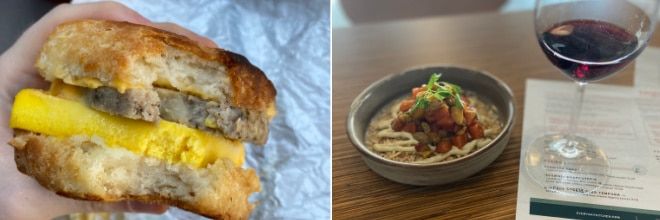
There’s a local gluten-free bakery here in Atlanta called Hell Yeah Gluten Free and they make the BEST biscuits ever–gluten-free or not. I love the nostalgia of a good biscuit because my mom regularly made biscuits growing up but I eat gluten-free almost always so this was a fun find!
I really enjoy salmon poke with a glass of red wine. Salmon poke was actually my first meal after having both of my sons. There’s something special about enjoying a slow meal and sipping a local wine with people you love.
What does Food Freedom mean to you?
Food Freedom means I’ve set myself up to ENJOY food rather than overthink food. It means I’ve allowed myself the flexibility to bend the rules and have a plan for what comes after a worth it food that I can implement immediately. More than anything, it means I feel empowered by my food choices now because I realize the control I have over the food I eat every single day.
Food Freedom means you have the power to make informed choices about how I eat. I know what feels good and what doesn’t work as well. More often than not, I mindfully choose what feels good and extend myself grace when my choices aren’t in alignment with my Food Freedom. I feel calm, empowered, and excited about my meals instead of shameful, confused, and disempowered. And finally, I revisit my Food Freedom plan as I learn more about myself and enter new seasons.

